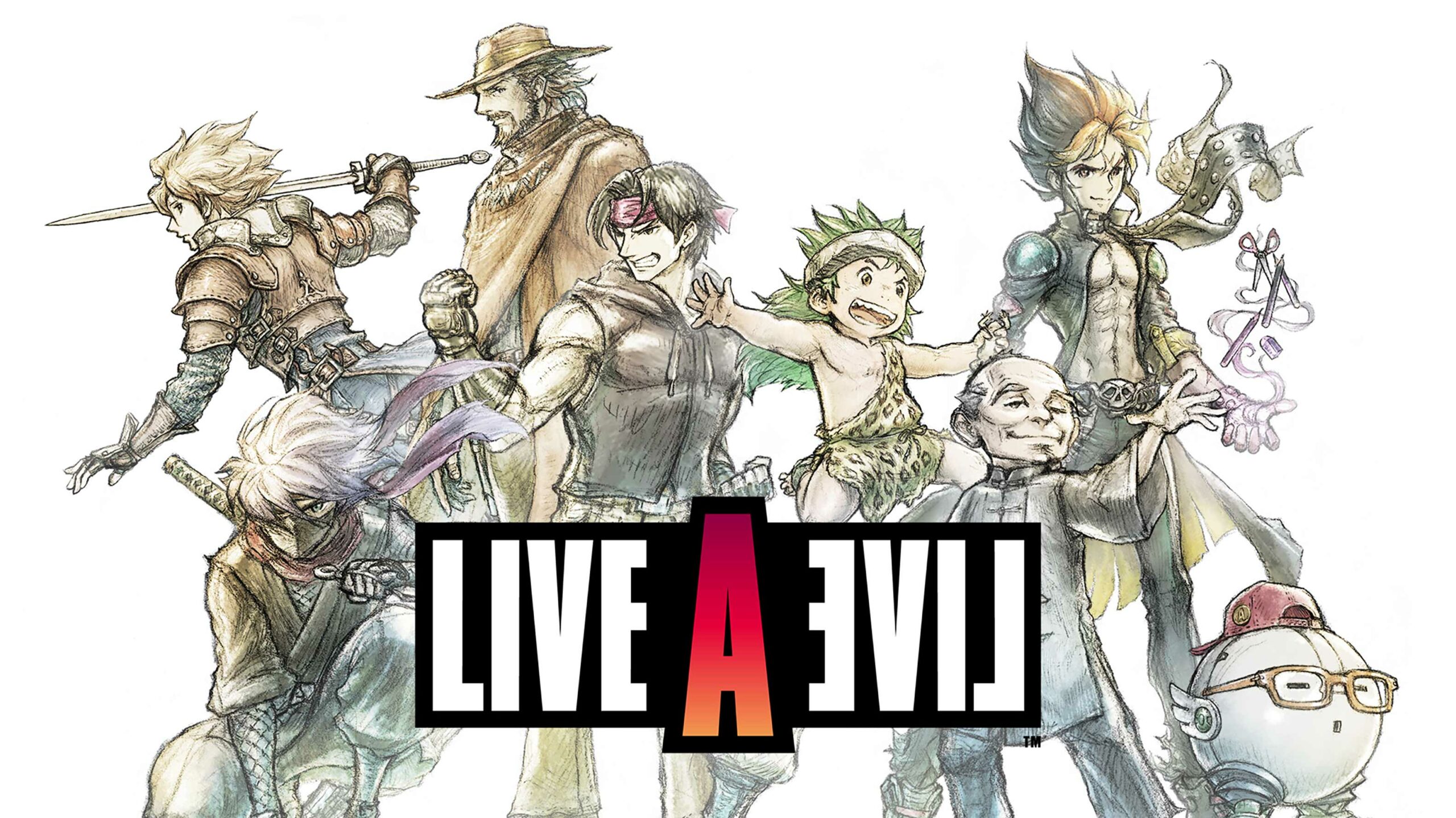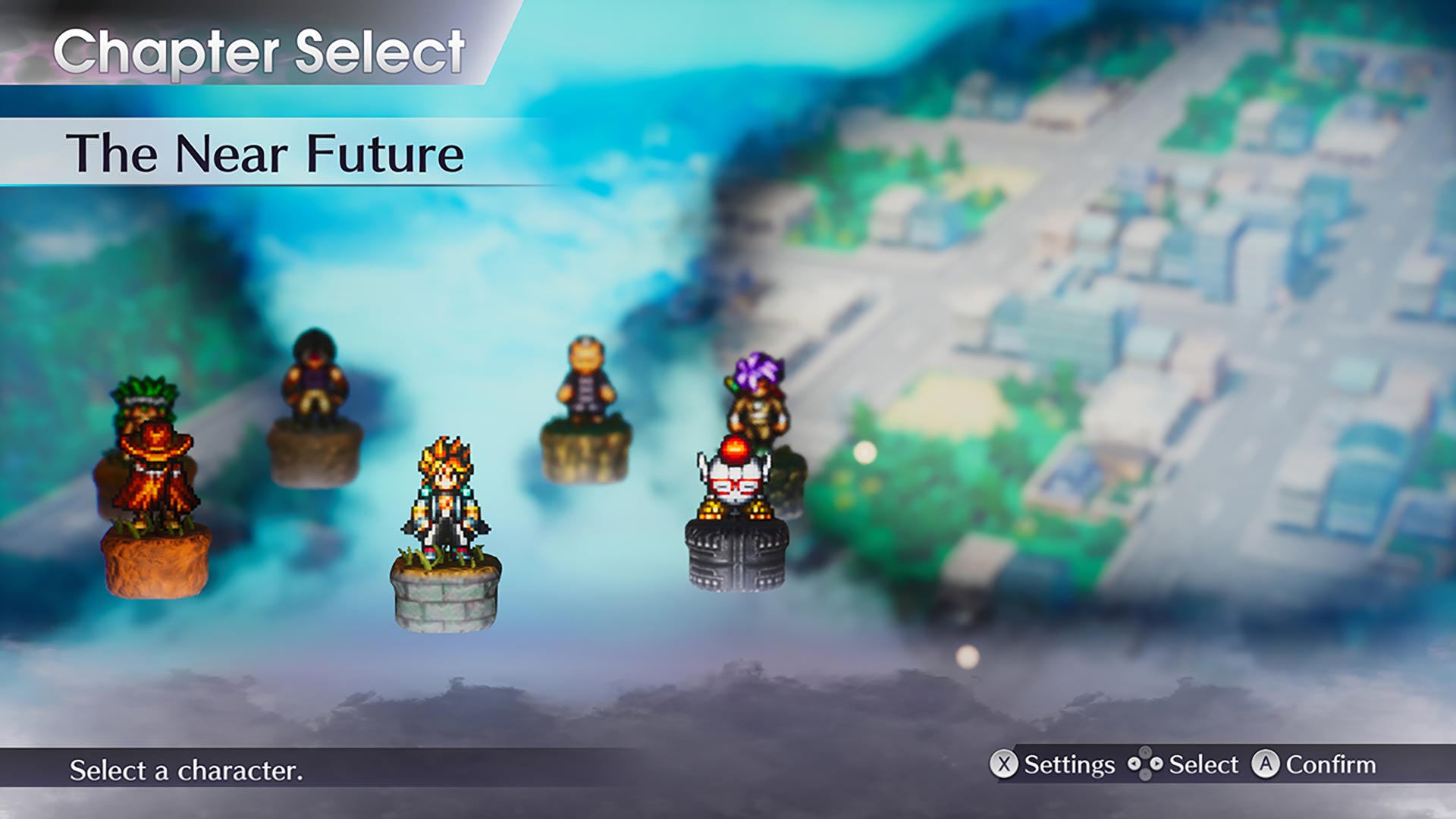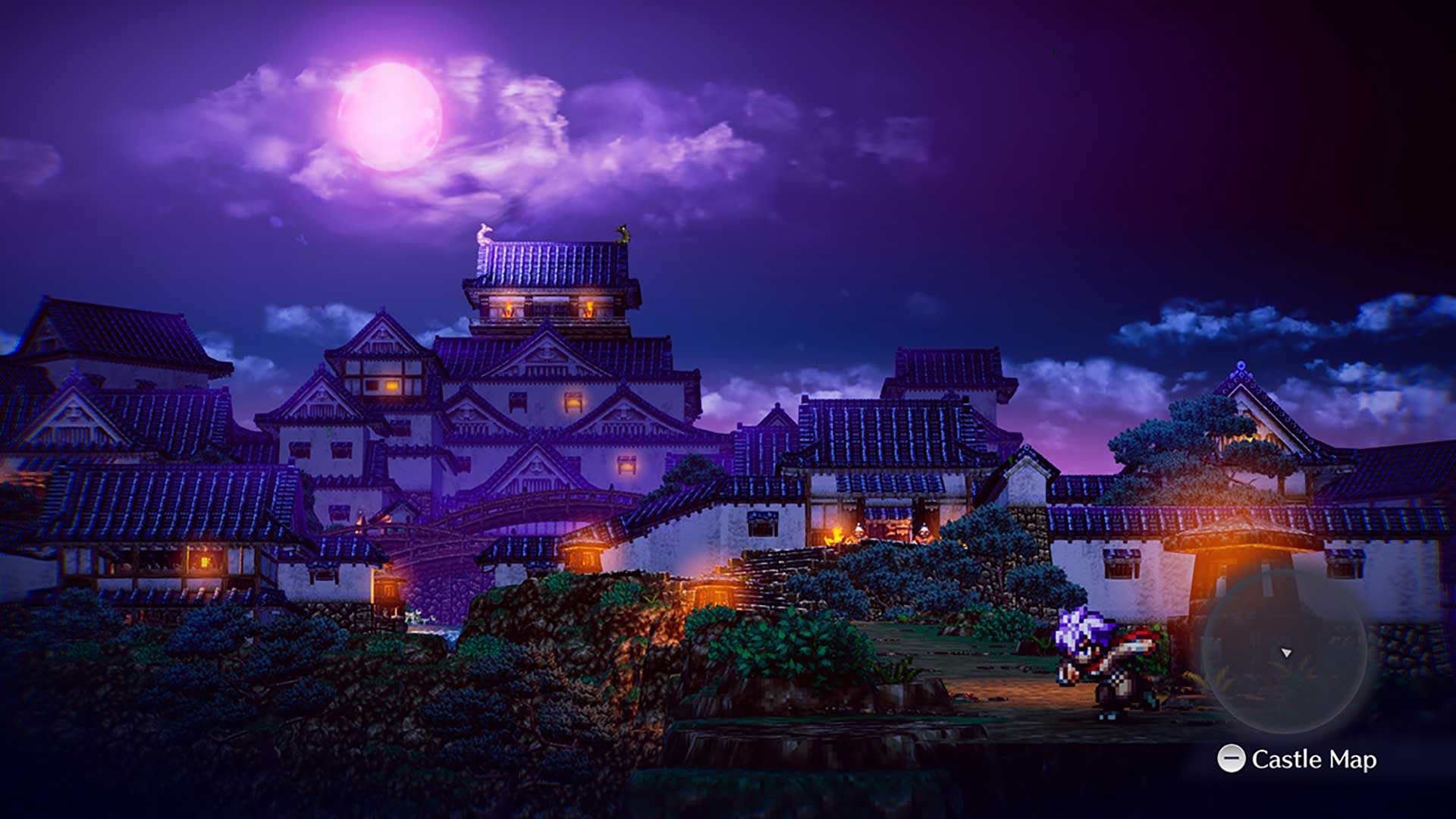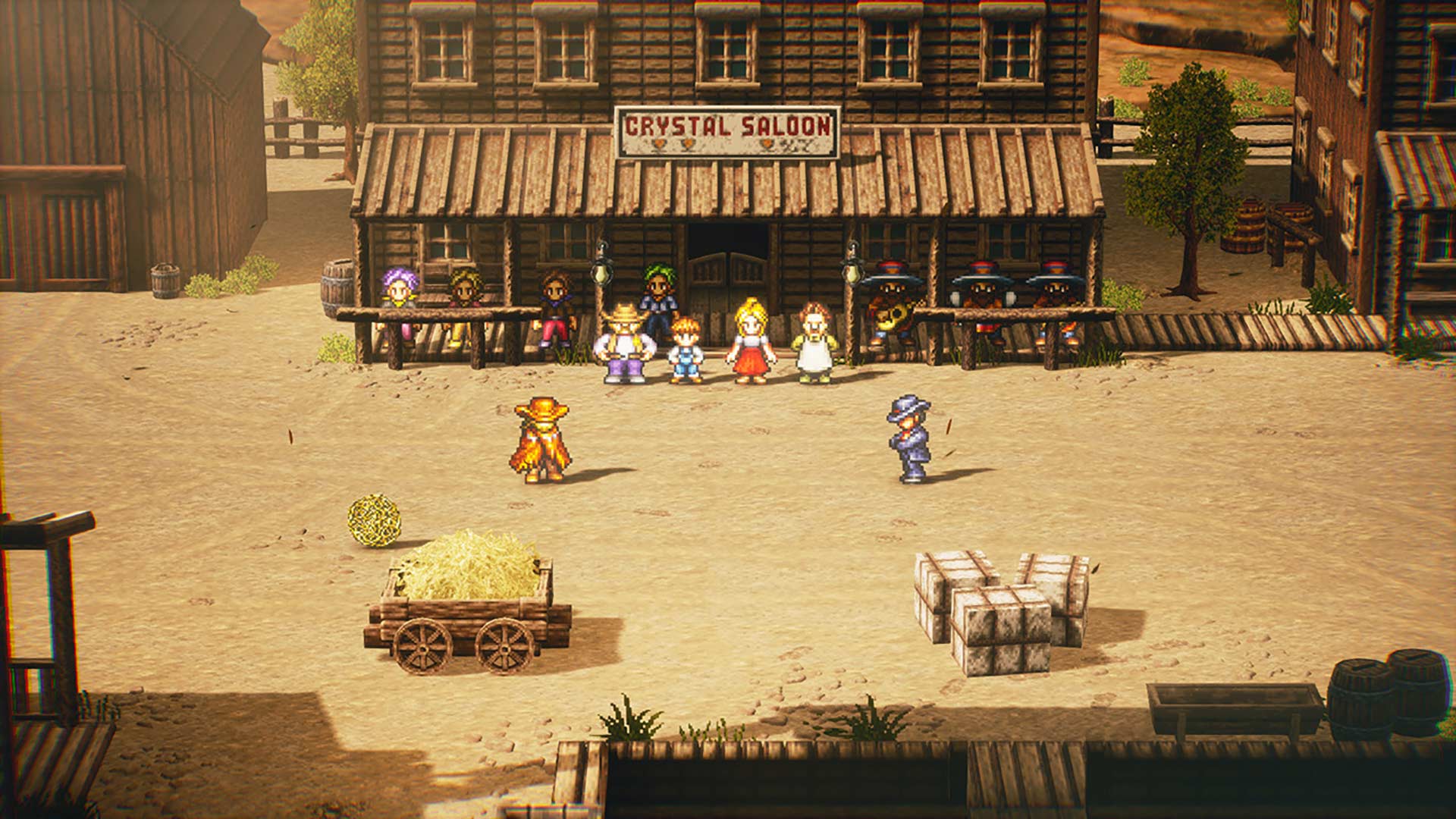
Square games have held a special place in my heart for most of my life.
Final Fantasy, Chrono Trigger, Kingdom Hearts… the journeys they’ve taken me on, and the long-lasting memories and friendships that came about from them, have meant a lot to this socially awkward nerd. Whether it’s the emotionally resonant stories, deep character progression and robust combat, there’s just a magical quality to these games.
Imagine, then, when I found out that a long-lost SquareSoft RPG was getting another shot, nearly 30 years later. Enter Live A Live, a fascinating 1994 title that was only ever released in Japan on the Super Famicom (SNES for my fellow Westerners).
While disappointing sales put a stop to any subsequent plans to bring Live A Live overseas, it’s nonetheless a notable title, as it hails from Takashi Tokita, the lead designer of Final Fantasy IV, co-director of Chrono Trigger and director of Parasite Eve. Now, Square Enix has brought Live A Live to the Nintendo Switch in a remake that changes little from the original experience beyond sprucing it up with the stunning ‘HD-2D’ visuals introduced with 2018’s Octopath Traveler.
Given my lack of knowledge about Live A Live, though, I didn’t quite know what to expect. Would it be like Chrono Trigger or Final Fantasy? But much to my surprise, Live A Live is decidedly different from those other Square works — both from the ’90s era and in the decades since. And by the end of my 25-hour playthrough, I came to an unforeseen conclusion: Live A Live deserves every bit of the recognition enjoyed by fellow SNES Square RPGs like Chrono Trigger and Final Fantasy VI. By masterfully playing with genre conventions, Live A Live proves to be a superb and unforgettable experience. Impressively, it offers that same sense of wondrous magic that I look for in a JRPG, easily making it my current Game of the Year.
A beautiful anthology
There’s so much to love about Live A Live, but its greatest strength lies in its radically different seven main scenarios. In “Prehistory,” a young caveman (Pogo) defies his tribe to save a young woman from being sacrificed. “Imperial China” follows an aging martial arts master (the Earthen Heart Shifu) as he seeks three final pupils. A shinobi named Orobomaru is tasked with rescuing a political prisoner and assassinating a feudal lord in “Twilight of Edo Japan.”
From Asia to America brings us “The Wild West,” in which a mysterious gunslinger known as The Sundown Kid defends a small town from bandits. Years later, in “Present Day,” martial artist Masaru Takahara pushes himself to become the world’s greatest fighter. Meanwhile, “The Near Future” shows us a psychic-powered orphan Akira Tadokoro who takes on a corrupt government. And, finally, “The Distant Future” tells the story of Cube, a robot tasked with investigating mysterious incidents on a spaceship.

Each premise offers its own terrifically unique flavour, driven in no small part by sharp character designs from renowned manga artists like Detective Conan‘s Gosho Aoyama (“Twilight of Edo Japan”), Skull Man‘s Kazuhiko Shimamoto (“The Near Future”) and Basara‘s Yumi Tamura (“The Distant Future”). These creations were already exceptional and unlike what was found in other JRPGs in 1994, and the Switch remake’s gorgeous HD-2D aesthetic only makes them pop all the more. It really feels like a marvelous short story collection, rather unlike the many bloated experiences we get today.
The variety of each chapter is further enhanced by an eclectic soundtrack from legendary composer Yoko Shimomura, best known for Kingdom Hearts and Street Fighter II. Shimomura’s sublime music has helped me through a lot of rough patches in my life, so it’s been an absolute delight to finally experience her first project for Square. Of course, it helps that the Live A Live original soundtrack is downright phenonemal, and the remake only elevates it.
Free from 16-bit hardware limitations, we now have new arrangements overseen by Shimomura that effortlessly mix a considerable assortment of instruments ranging from guitars, saxophones and piano to violins, organs and choirs to sensational effect. Oh, and Hironobu “King of Anime” Kageyama, the Dragon Ball Z opening singer, handles the Japanese and English vocals of the delightfully over-the-top song that plays when Akira commandeers a giant mech. Need I say more?
Ever-changing gameplay that constantly innovates
But strong presentation only gets you so far; you have to care about what’s actually happening in each of these chapters, and they have to feel different. In that sense, Live A Live more than delivers with one of the most refreshingly innovative and diverse gameplay experiences in any JRPG I’ve ever played. Admittedly, the trade-off with the “short story” approach is that you don’t get to spend nearly as much time with any one character as you would in a single narrative experience like Final Fantasy or Chrono Trigger.
It’s a worthy compromise, though, allowing Live A Live to stand out among its peers and, even, avoid many of their pitfalls. Compare it to Octopath Traveler, best known for unabashedly trying to emulate Final Fantasy VI. It was a decent game overall, but one that suffered immensely from each of its eight stories feeling too disparate and repetitive in their ‘town-cutscenes-dungeon-final boss’ designs.
Live A Live, though, is far more ambitious in its pacing and structure, and so all seven scenarios, while clocking in at roughly three hours each, don’t play out even remotely the same. Take “Prehistory,” which I picked first: it’s completely dialogue-free, told instead through lively sprite animations and the occasional emoji. Such a novel manner of storytelling lends this chapter a significant amount of lovable charm, particularly through Pogo and his loyal gorilla friend Gori’s amusing bickering. This contrasts nicely with something like “Distant Future,” which, outside of an optional minigame, has no combat until the end.
Instead, you’re given free roam of a large ship, the Cogito Ergo Sum, to determine who among the crew is responsible for a deadly series of events. It’s a dark and eerie mix of an Agatha Christie-esque “whodunnit” mystery with an Alien setting, and it’s extremely engrossing. For something tonally in between those chapters, “Imperial China” is a touching fable about a wise old man trying to leave a positive impact on the world before his time comes while having his hands full with young and impetuous apprentices. That’s to say nothing of the engaging Western antics of The Sundown Kid and his rival/begrudging ally Mad Dog, the endearing relationship Akira has with his fellow orphans or Orobomaru’s incredibly stylish ninja running and somersaults through moonlit, trap-filled pagodas in the Feudal Japan chapter.
What does unify each chapter, though, is the combat. Like a lot of classic JRPGs, Live A Live features a turn-based battle system, but it’s got some nifty twists. Namely, it takes place on a traversable 7×7 grid and focuses on a slowly filling bar that’s reminiscent of the Active Time Battle gauge in the Final Fantasy series. In Live A Live, basic attacks can be carried out immediately, but moving tiles or carrying out powerful maneuvers that must be charged will allow your enemy’s bar to increase in the meantime. What makes Live A Live‘s combat so solid, though, is that it’s all about positioning.
Not unlike chess pieces, many attacks have unique radiuses covering different directions, requiring you to be strategic about how you move your characters. Do you risk charging up The Sundown Kid’s handy multi-hit, area of effect gunshots, which might end up being avoided or even interrupted by certain heavy attacks from enemies? Maybe you’ll carefully line him up so he can attack with a move that hits through a group. Specific tiles can also be ensnared to cause periodic damage, which only further encourages you to be thoughtful about where you move and attack. While I’ll always have a soft spot for the static turn-based systems of Final Fantasy and Chrono Trigger, the mobility of Live A Live‘s battles feels fresh and exciting for an old-school JRPG like this.

If there’s an issue with the combat, it’s that there’s a general lack of difficulty balancing across the seven chapters. By and large, most can be completed with few, if any, deaths, making them feel a touch too easy. However, some chapters, like the more combat-heavy “Prehistory” and “Twilight of Edo Japan,” occasionally have battles that come off as overly punishing. That said, this is largely a forgivable issue, since Live A Live, as its title suggests, is more interested — and at its best — when it just lets you live in its manifold settings. Combat isn’t necessarily the focus, at least in several chapters. In this way, it thankfully avoids the grinding tedium that can befall many JRPGs.
Moreover, each level offers its own unique gameplay gimmick, many of which impact combat in some genuinely creative ways. For example, Pogo’s ability to sniff out where random encounters will occur and Oboromaru’s to hide from enemies are both brilliant ideas to avoid conflict and add a layer of strategy. These help offset some of the uneven levels of challenge, as you’re afforded a welcome bit of freedom in whether to fight in the first place. On a similar note, The Sundown Kid’s uneasy alliance with Mad Dog has them gathering supplies to set up traps with the townspeople, which, in turn, affects the final boss fight. Live A Live‘s willingness to let you alter or even avoid combat entirely is genuinely revivifying for a JRPG, and I wish we saw more of this from other titles in the genre.
It’s also easy to see how Live A Live‘s regular introduction of new mechanics could be quite messy, but impressively, it manages to pull off nearly all of them. I say “nearly” because Akira and Masaru’s individual hooks feel disappointingly half-baked. The former has a mind-reading ability that serves no real purpose narratively or mechanically beyond revealing some optional dialogue, although it’s at least ameliorated by a small, chapter-specific mini-city overworld that serves as a neat segue between areas.
Masaru, though, doesn’t get anything nearly as cool; all that changes with him is that he can automatically learn abilities that enemies use on him. On paper, that might sound like a compelling angle, but his chapter — which adopts a Street Fighter-esque “Arcade Mode” boss rush format — means your opportunities to use these moves are mostly limited. Worse still is the fact that Masaru is easily the blandest of our heroes; he wants to become an unrivalled fighter, and that’s literally all that defines him. Some brief cutscenes in between each fight could have gone a long way towards shaking his chapter up while providing some insight into who he is beyond “muscly meathead.”
But wait, there’s more…

You might have noticed that the key art for this game features eight characters, and I’ve only mentioned seven. Indeed, there’s more to Live A Live after everything I’ve mentioned thus far: eighth and ninth chapters that bring everything together. Unlike Octopath Traveler, which featured a bunch of disparate stories which awkwardly came together by the end, Live A Live smartly plants connective narrative seeds throughout each scenario.
As you go through all seven, there’s a certain key element that brings everything full circle, and you’ll likely begin to notice it over time. But it’s not until you’ve cleared that the eighth chapter, “The Middle Ages,” is unlocked, and it’s here that Live A Live truly lays out its devilishly clever grander scheme. This scenario, which focuses on a young knight named Oersted as he leads a party to save his beloved from The Lord of Dark, is outstanding. What starts off as a seemingly standard fantasy story reveals itself to be downright tragic, and, moreover, a brilliant means of recontextualizing the game as a whole.
The final chapter, meanwhile, is all about sweet, sweet payoff — a fantastic culmination of all previous narrative threads and gameplay mechanics into one thrilling, meaty package. The ways in which each character is brought into the fold — and the greater emphasis on exploration and combat therein — create a more traditional, yet nonetheless exciting, JRPG experience. To say more would spoil the copious amount of surprises, but suffice it to say Live A Live absolutely sticks the landing.
A gem no longer hidden
As a lifelong fan of Square JRPGs, it’s difficult to express how much joy Live A Live brings me. With an avant-garde premise that still feels new nearly three decades later, Live A Live provides something I rarely feel from modern JRPGs: a true sense of discovery. Whether it’s the absolutely sensational character designs and music, wonderfully varied approaches to storytelling, immaculate turn-based combat and enlivening gameplay twists, I was constantly excited to see more. Final Fantasy VI and Chrono Trigger might get much of the attention from the SNES era, but Live A Live, without question, deserves to be in the same conversation. Not only is it my favourite game of 2022 so far — it’s an all-time classic.
Live A Live will release exclusively on the Nintendo Switch on July 22nd. A free demo covering three chapters of the game is also available on the eShop.
Image credit: Square Enix/Nintendo
MobileSyrup may earn a commission from purchases made via our links, which helps fund the journalism we provide free on our website. These links do not influence our editorial content. Support us here.


